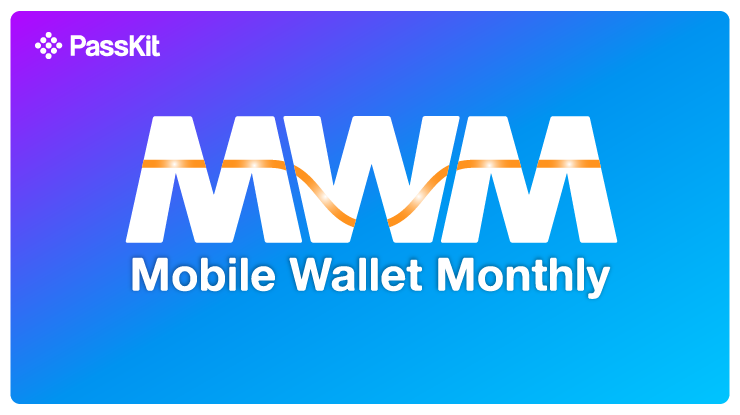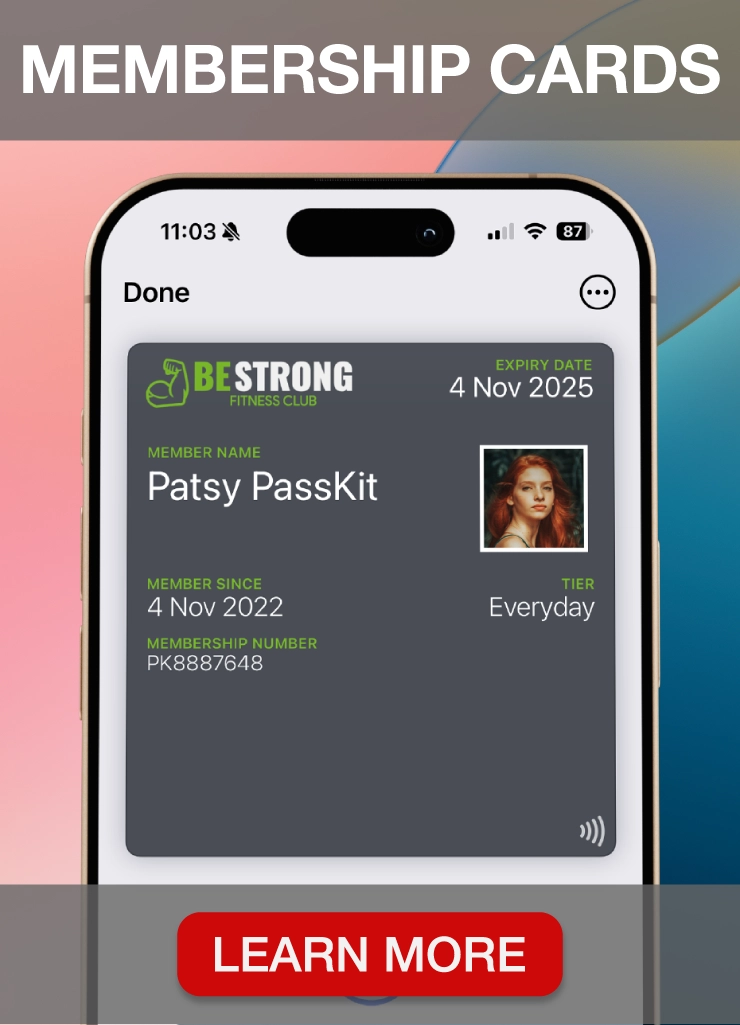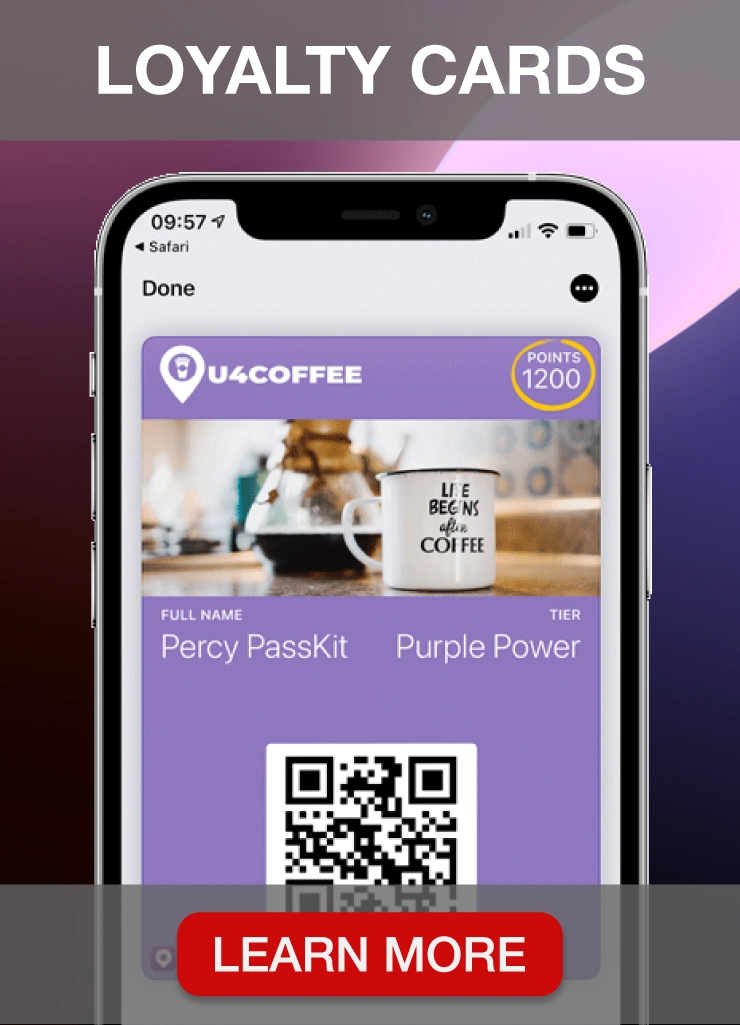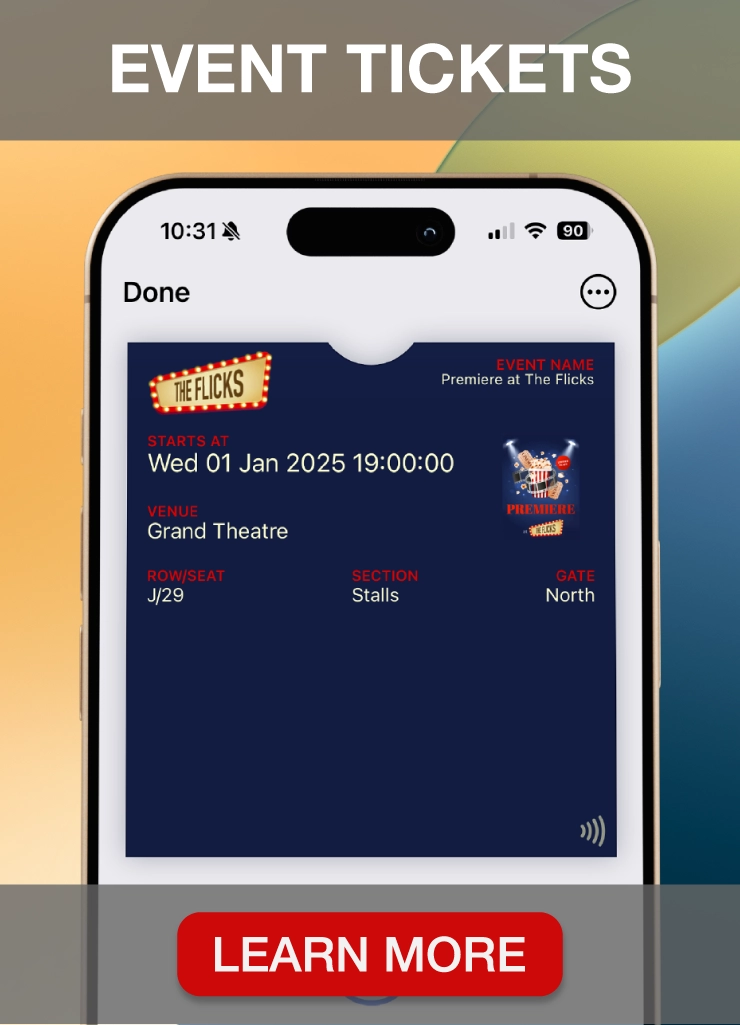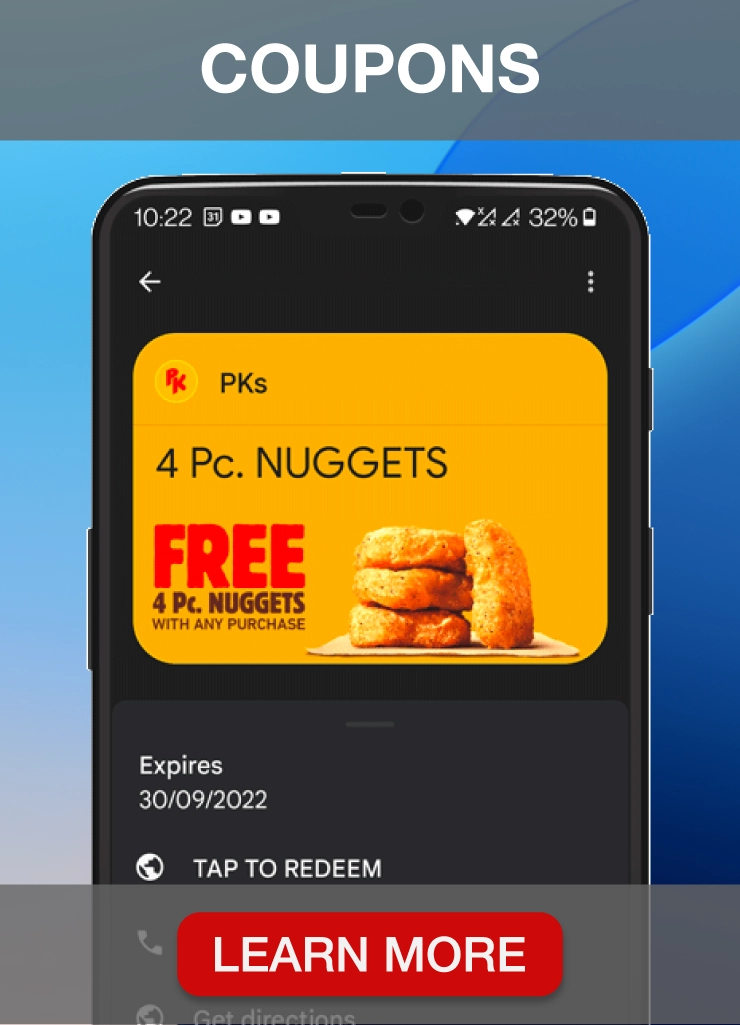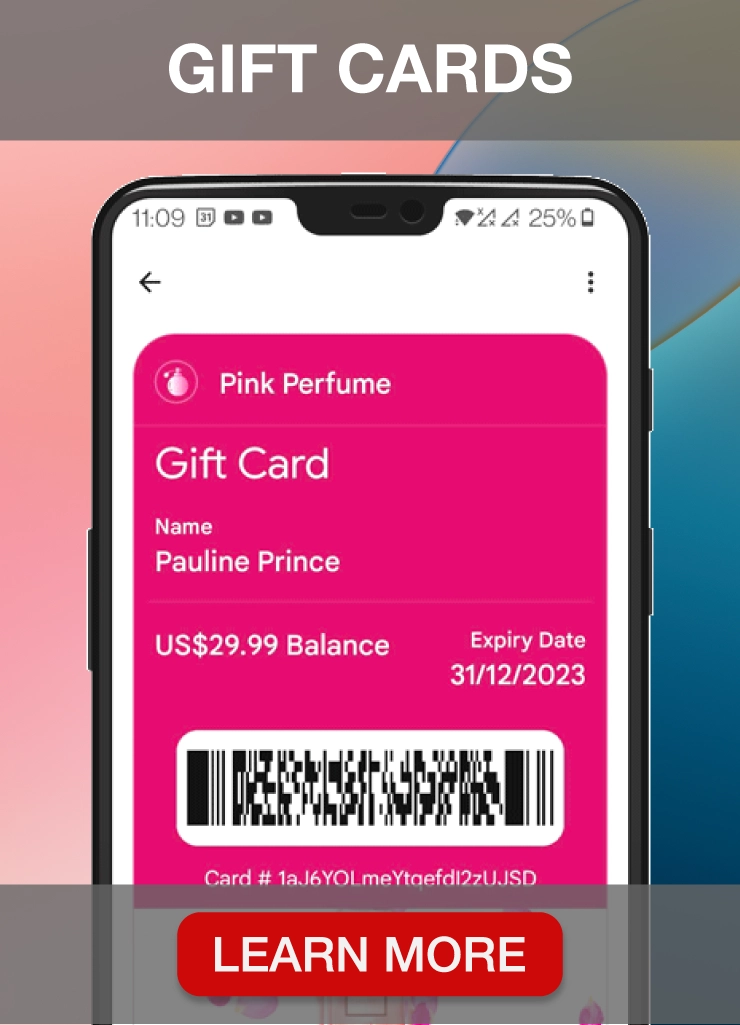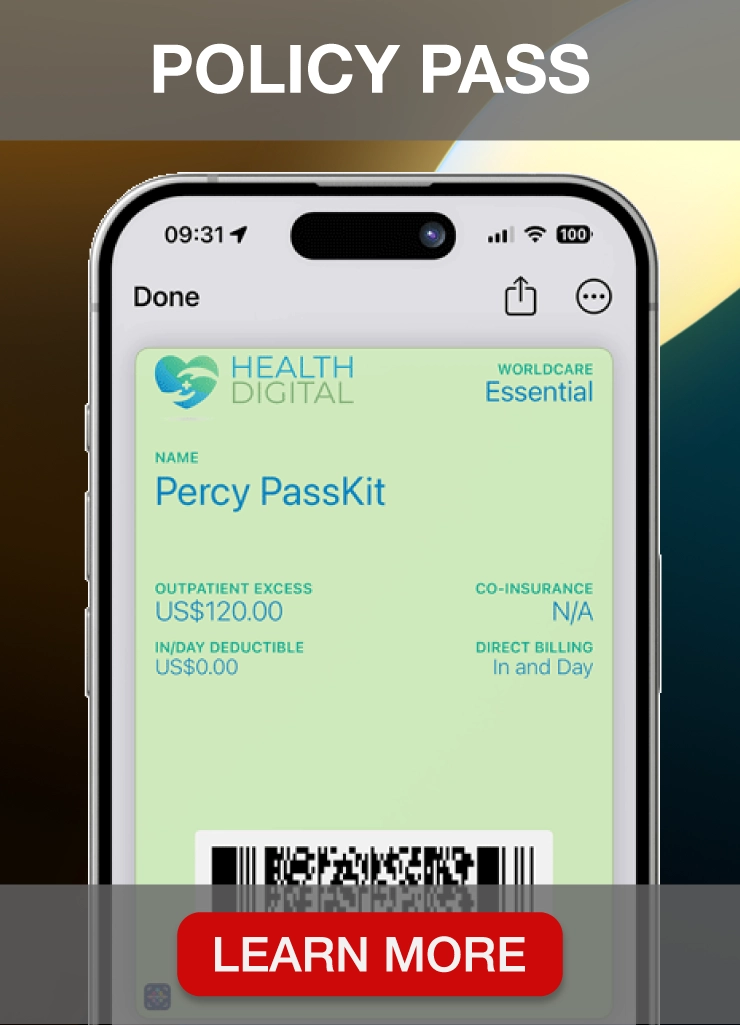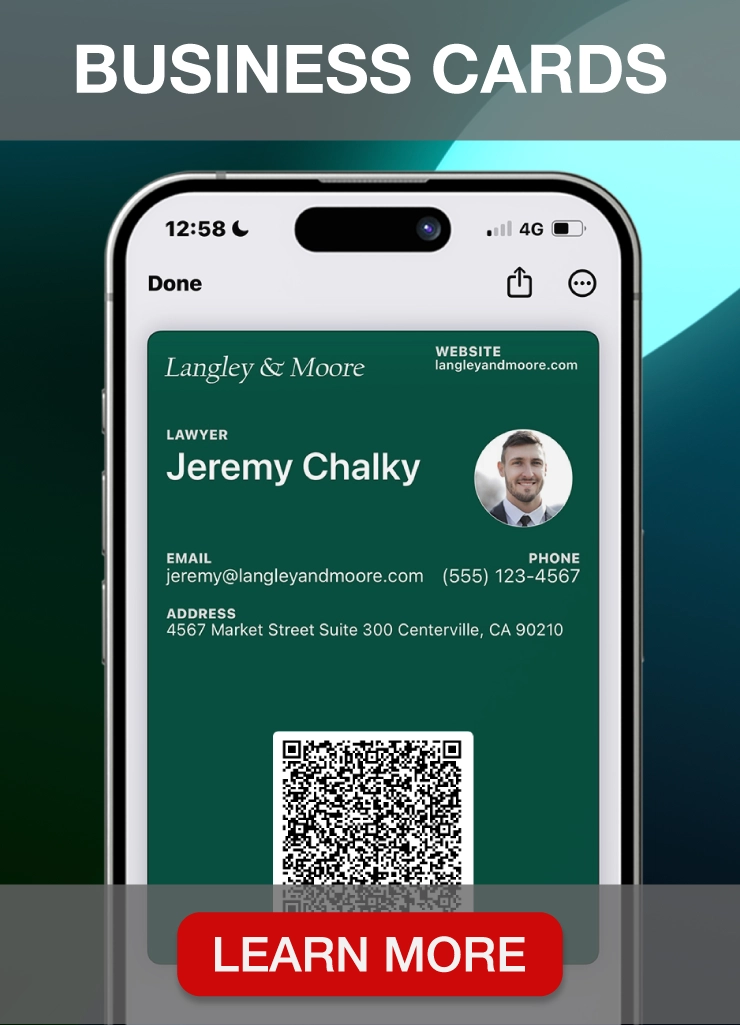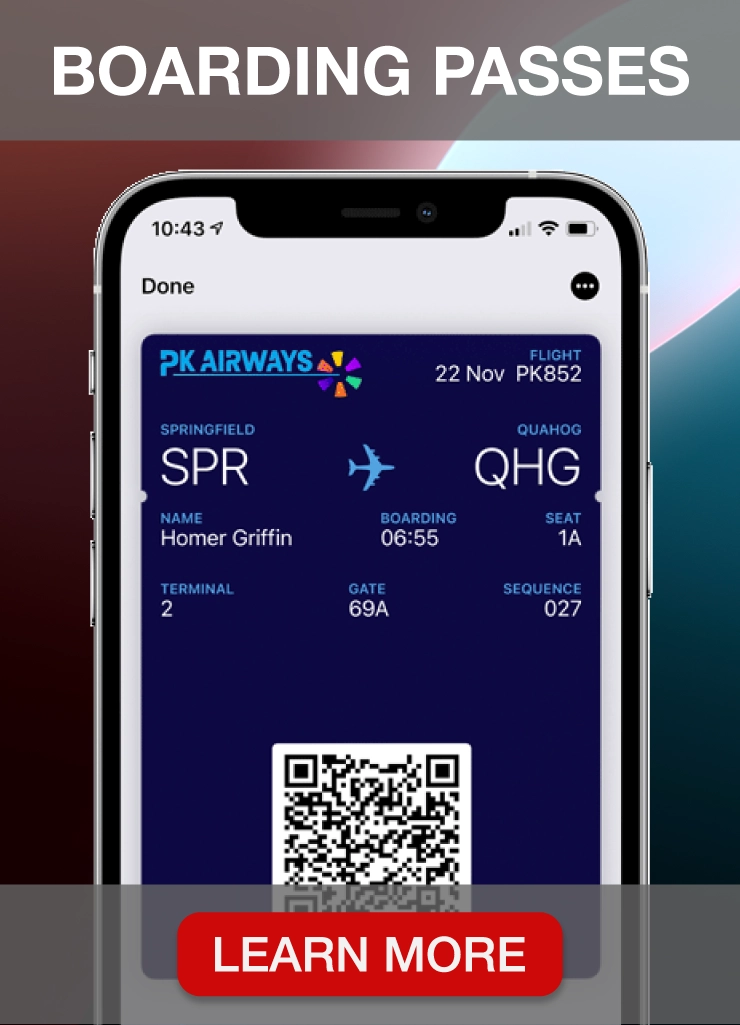Customer experience has always been an essential aspect of every successful business strategy. Customers want to feel excited when they spend their money. They want to enjoy themselves and always opt for a product or service that offers a superior experience.
With limited movement and in-store contact with your customers in today’s new normal, it’s never been more challenging to establish a close connection with them. However, you can utilize many different customer experience strategies and tailor them to suit the needs of your business.
Simple things such as digital memberships or contactless payments can convince customers to return. That’s precisely why you should start evaluating your approach and thinking of new ways to attract and retain customers. One such way is PassKit, a framework that seamlessly integrates with Apple Wallet and Google Pay and lets you create a wide variety of digital passes for your customers that will increase your retention rate and customer loyalty.
In this article, we will discuss the importance of customer experience strategies and tools, see how they help you connect with your customers, and improve your business results.
What is a customer experience strategy?
Customer experience strategy represents a set of continuous activities that aim to improve your customers’ impression of your business in the long run. Every successful customer experience strategy consists of different metrics and indicators that measure its effectiveness. Let’s explore the most critical metrics for measuring customer experience.
Customer Effort Score (CES)
Customer effort score is the most effective method for predicting future customer behavior and loyalty. The fundamental CES question is simple: How difficult was it to solve your problem/situation in our company. You score answers on a scale of 1 to 5 points where 1 represents minimal effort and 5 represents very great effort.
You calculate the CES score by adding all received responses and dividing the number by the total number of responders.
Customer Satisfaction Score (CSAT)
CSAT is the oldest and most widespread method of measuring user behavior and attitude. This method gained attraction in the 80s, and many companies use it today. The CSAT survey contains one or more questions about how satisfied the customer is with a particular product purchase, service, telephone conversation with an employee, online purchase, etc.
You gather responses through a 5-point measurement scale. You can add an open-ended question to the main question and ask your respondents to explain their assessment.
Here’s an example of the 5-point scale when looking for a CSAT rate:
- Very unsatisfied
- Unsatisfied
- Neutral
- Satisfied
- Very satisfied
Here’s the formula for calculating CSAT:: ((number of satisfied customers (4 stars) + number of very satisfied customers (5 stars))/number of total responses)*100%.
Net Promoter Score (NPS)
NPS is the most common CX metric that measures customer experience and customer loyalty based on one question: On a scale of 0 to 10, how likely are you to recommend us to a friend, family member, or colleague? Based on the answers, customers fall into one of 3 groups:
- Promoters – loyal and enthusiastic customers who rated your company either 9 or 10
- Passives – satisfied with the service but not as much as promoters. They usually rate your business between 7 and 8.
- Detractors – not satisfied. They will not come to buy again and may influence other customers not to purchase from you or even promote your competition. They usually rate your service or product between 0 and 6.
The NPS question asks the customer to rate the overall experience with your company, not just the last one, which makes this metric a good indicator of growth. As a result, it is often considered a significant CX metric.
The NPS question can be stand-alone, but it is much more helpful to pair it with an open-ended question in which customers can explain their assessment. It provides rich qualitative feedback that can be used by different sectors in the company, from products to marketing.
You calculate the NPS score by subtracting the percentage of detractors from the percentage of promoters.
Customer Retention Rate
Customer retention rate measures how long you can retain a returning paying customer. This metric is a great indicator that helps pinpoint when customers decide to ditch your product or service. You can use it to optimize your services and improve customer retention. Returning customers are more likely to promote your company with their circle of friends and acquaintances, which is why you should pay attention to them.
You can calculate the customer retention rate by selecting two different periods for measurement and seeing how many of them stay loyal for one period vs. the other period. Once you collect this data, you should divide the percentage of loyal customers in the first period with those in the second period.
Customer Churn Rate
Customer churn rate exposes how many customers leave your business within a specified timeframe. This metric is vital because retaining customers is less expensive than acquiring new customers. A churn rate will save you a lot of marketing budget and help you learn more about the weakest points in your business and marketing strategies.
You calculate the churn rate similarly to the retention rate – selecting two different periods for measurement and seeing how many of them leave during one period vs. the other period. Once you collect this data, you should divide the percentage of lost customers in the first period with the rate of lost customers in the second period.
First Contact Resolution (FCR)
It is another helpful metric that is particularly effective for measuring the success of your customer service. FCR represents the percentage of resolved inquiries within one interaction with your agents. Customers prefer solving any issues on the spot and are more likely to return if your customer service is that efficient.
You calculate the first contact resolution rate by dividing the number of inquiries resolved during the first interaction by the total number of questions.
Average Resolution Time (ART)
Average resolution time is very similar to first contact resolution, except it measures the average for all interactions instead of only the ones resolved during first contact. This metric is important because if there’s something that customers hate, it’s waiting until their issue is resolved. If your average score is too high, then it’s time to reconsider your customer support efforts and find a way to be more efficient.
You calculate this score by calculating the total time it took to resolve all issues within a specified timeframe and dividing it by the number of tickets you receive.
Customer Referral Rate
Unlike the net promoter score that calculates how likely they are to promote you to their friends and family, the customer referral rate shows how many are promoting your business. It is an excellent tool for your customer experience strategy because it lets you know how much time and effort you should invest in your referral products. There’s no better and more effective marketing than word of mouth, so don’t be afraid to use your customers as business promoters.
You calculate it by taking note of the total number of purchases made through referral marketing. So if you had 150 customers and 1 of them was a referral, your customer referral rate would be 1.5%.
Monthly Active Users (MAU)
Lastly, the monthly active users metric shows how many individual users were interacting with your website in the past month. It is a great way to forecast trends and gather information about visitors. You’ll notice which months are busier and see the peak time increase your marketing budget and efforts to yield the most conversions.
The impact of customer experience strategy on your business
Customer experience is the most important factor for your business’ success. If they aren’t satisfied with the experience, they will probably never return or refer their acquaintances to your business. Moreover, it also has a massive impact on your overall reputation.
Apple is a great way to see how improving customer experience can be fruitful. The whole reason behind the company’s popularity, besides high-quality tech, is that they pay attention to the small details. Their staff is highly-trained and always friendly, they respond to user inquiries immediately, and they consistently ask for user input and implement it in their products.
The infamous Fyre Festival is another great example of how CX can ruin someone’s business and life. Even though the festival’s organizing team was full of industry experts and investors, that still wasn’t enough to save it. The reason behind it is that they didn’t care about customer experience.
They never communicated any issues with the festival-goers before the event, even though they knew well that it was falling apart. The organizers didn’t build accommodation, bring food, or create a stage. Moreover, many famous artists canceled the performance before the festival ever started.
They kept updating their website with fake offers to hide the disaster. Instead of refunding everybody and telling them not to waste their money coming to a remote island, they kept quiet and deceived their customers. After the fact, the CEO tried a couple of other business ventures, but they failed because he completely lost trust within the general public, which ruined his reputation.
Therefore, customer experience has the power to either make your business bloom or sink it altogether.
What is a customer journey map and why is it important for your customer experience strategy?
A customer journey map outlines the story of every customer experience with your brand. It is a great way to visualize your customers’ interactions across all platforms and ensure that none of them slips through the cracks. A customer journey map will bolster your business with valuable insights into customers’ pain and pleasure points.
Customer journey is a critical aspect of customer satisfaction. A journey map is a strategic approach that includes feedback from customers to create a baseline for understanding customer expectations. It is crucial for successful marketing and advertising campaigns.
Each customer’s experience should be tailored to their interests and feedback on the previous touchpoints in their journey. A customer journey map allows businesses to create individualized experiences across all channels and platforms, from advertising to support, only presenting what customers might be interested in.
One study reported that 84% of consumers feel that being treated with respect is a key factor for winning their loyalty, which is why your efforts should go towards creating a personalized experience for each of your customers.
Understanding the differences in buyer personas moving from initial interest to conversion through the buying funnel is integral to a customer journey map. This understanding gives you steps to analyze and customize your marketing campaigns to increase conversion rates.
With customer journey mapping, you can better tailor your opportunities according to your customer’s expectations. By documenting the process, you can identify areas for dissatisfaction or space for improvements.
What should you include in your new customer experience strategy?
Customer experience is very complex and doesn’t have an exact formula. Each industry is different, which is why it’s important to play around until your find the perfect recipe that works well for your product or service. Below, we’ll discuss the most common ways to improve your customer experience efforts and retain more customers.
1. Be user-friendly
User-friendliness is extremely important because it lets your customer have an effortless experience while purchasing your product or service. That has never been easier with recent technological innovations like contactless payment systems and mobile wallets. This technology lets users complete tedious payment processes in seconds and avoid massive lines. Moreover, it’s more sanitary because money and cards are known to hold millions of bacteria.
You can use different software to foster mobile payments and create interesting reward programs for your customers. PassKit is a tool that our team developed with customer experience in mind.
Loyalty programs and digital passes have become the norm, especially among the younger generation, because customers prefer using mobile phones for any monetary transaction. PassKit seamlessly integrates with Apple Wallet and Google Pay.
You can use our tool to create beautiful digital passes and distribute them to your customers. The editor is easy-to-use, and it comes with different features and options that let you customize your digital passes with ease.
Try PassKit for free to see how including mobile wallet payments and digital passes into your customer experience strategy will make your business blossom.
2. Invest in staff training
Training your customer service team is equally as important since there’s a certain etiquette to follow, which is not something everyone knows. You should also create a unified manual about how your employees should communicate with your customers so that everyone receives an equal, high-quality service.
Include staff members in the research and analysis process and notify them about their successes and failures. It will foster a more productive environment that will proactively respond to all your customers’ queries and issues.
3. Be present on different digital platforms
Being present across different social media channels will enforce better communication with your customers and allow you to gather more data about their experiences when dealing with your business. We’ve seen how social media presence can positively and negatively impact various companies, which is why you should create dedicated teams to ensure that nothing goes wrong. Moreover, you can use Passkit’s loyalty program enrollment link to your social media page to inspire your followers to join with one click.
We also recommend using some automation and management platforms to automate newsletters and social media posting tasks. Create a detailed plan, schedule posts and continually check the feedback from your customers and followers.If you already have a rich email base, you can upload it to Passkit and send your customers personalized emails with loyalty cards. It will maximize the success of your campaigns and keep them posted about news, discounts, and other programs.
4. Regularly collect feedback
Feedback is the easiest way to get inside the minds of your customers. A simple thing like a survey email or a questionnaire prompt on your website can help you understand them better. And there’s no better source of information than people who use your product or service.
You can use various widgets, add ons, and other types of software to create an efficient feedback system that will inspire customers to report any issues or compliments. It will help you learn what you need to work on or continue enforcing.
5. Review and optimize current customer experience strategy
Before you start changing things, you need to evaluate your current customer experience strategy thoroughly. That is important because you need to learn what already works or doesn’t. Otherwise, you won’t know which customer experience aspects to prioritize. The best way to go about it is to calculate some of the scores we’ve mentioned before and see what you can improve.
6. Keep track of performance
How will you know if something you’re doing is effective if you don’t find a way to measure its success? Keeping track of how your campaigns and rollouts perform will be a clear indicator of what you need to improve.
You can use the information you receive through PassKit to analyze and optimize the success of your campaigns. It helps you make real-time adjustments, send triggering location-based, behavior-driven or time-sensitive messages, or personalized, dynamic updates to your customer’s mobile wallet.
It is also good to track the performance of your teams across different departments to see if you can improve anything internally, such as the output, efficiency, and quality of service.
7. Focus on your target audience
Think about audience segmentation and catering to specific target audiences to ensure that your campaigns have the biggest hit rate. It’s much easier to appeal to a group of individuals than the general public. Each audience has its peculiarities that you can explore and focus on.
It also includes checking out which platforms work for different groups. For example, people above the age of 40 will likely use Facebook or Instagram, while teenagers and kids most likely use Instagram or TikTok.
8. Improve speed
There’s nothing better for increasing your customer success and retention rate than improving the speed of your service. Customers hate waiting in long lines or waiting for days to resolve a specific problem or situation. Create and enforce different strategies within your customer service teams to enable your support agents to respond to queries quickly.
Create a rich knowledge bank or a forum where you’ll be able to store common customer questions and let your agents refer them to those pages. Also, consider automation, which will go a bit more in-depth below.
9. Use automation and AI
Automation and AI are probably the most effective way to take some load off your employee’s shoulders and let them focus on other important activities other than boring, repetitive tasks. Automation software can help you put different processes on autopilot, such as analyzing customer responses, responding to chat inquiries or posting on social media.
Chatbots, for example, can be active non-stop. You can use machine learning algorithms to create a database of responses that increase with each chat. Using these tools will also help you provide more personalized service for your customers, which they will enjoy.
You can also use PassKit’s system to send location-based messages when customers are near your store once they save the digital wallet card on their phone. It makes it very easy for them to find your store and remember your brand. You can also send notifications about discounts and active loyalty programs to incentivize them to join.
10. Give back
It’s also important to give back to your customers and reward them for their loyalty. You can do that through dedicated loyalty programs, which will motivate them to continue shopping with you and gather more points. PassKit’s Loopy Loyalty program makes this easier thanks to a convenient punch card editor and other exciting features.
After every purchase, customers collect points called punches. Once they have enough punches, they can redeem rewards their favorite business gives. Additionally, it helps businesses retain customers thanks to its incentive reward system. Merchants can create customized loops where the number of passes will yield either or in-store rewards. It is a great way to engage customers and increase customer lifetime value.
5 best tools to improve your customer experience strategy
Customer satisfaction has never been easier to measure because there are many high-quality tools on the market. Below, we’ll mention the top five tools that companies across the globe use to create a better connection with their customers and improve their experience.
1. PassKit
PassKit is a great tool that makes payments, digital passes, and loyalty programs look easy. Contactless payments have become the norm during the COVID-19 because they are safe, convenient, and germ-free. Users have turned their phones into wallets because they can hold a lot of data and easily fit in their pockets.
Our tool lets you create and enforce loyalty programs and design attractive digital passes that users can store on their phones. You’ll be able to notify them about active promotions and inspire them to promote your product or service to their friends.
Loyalty programs are important for creating a superb customer experience. You will foster better communication with your clients and improve your customer retention rate.
Features and programs:
- Membership and loyalty card manager
- Digital coupon campaign manager
- Comprehensive mobile wallet APIs
- Integrations with Apple Wallet and Google Pay
2. Zendesk
Source: Zendesk
Zendesk’s customer service software streamlines the customer service process, increasing productivity and satisfaction. Its customer-team collaborative platform gives agents access to a unified interface that has all the tools necessary for fast, personalized responses on any channel. Zendesk sells and licenses customer service tools that fit the needs of companies of any size.
Zendesk is a customer service software that eliminates the need for an assistant or secretary to answer your email, so the rest of your team can enjoy a decreased workload. It’s powerful yet easy-to-use and customization is simple, so you can build on what they have.
3. Adobe Experience Manager
Source: Adobe
Adobe Experience Manager is a content management system that lets you create a seamless digital experience for your customers. It allows you to automate various processes to improve output and efficiency.
This software’s important customer experience feature is the Adobe Experience Manager Forms that lets you design responsive forms and post them on your channels, which you can then use to gather feedback and improve your service. Overall, this is a great tool for your customer experience strategy to foster better collaboration between teams.
4. Salesforce
The Salesforce Sales Cloud offers the best CRM software, specializing in smaller companies but catering to small-mid-size companies with excellent customer service. The Salesforce Sales Cloud has CRM capabilities that provide lead and contact management for marketing automation.
Along with managing customer accounts, it can track sales leads, conduct and monitor marketing campaigns, and provide service post-sale. The Salesforce Lightning Experience also provides a better way for sales professionals to generate leads and manage customer accounts. Using Salesforce, you can automate different aspects of your workflow and your data collection mechanism. All work is synced together thanks to the cloud.
5. HubSpot Service Hub
Service Hub is a cloud-based platform you can use for customer service. It is designed for small to large businesses. The service helps you manage contacts, deals, appointments, leads and more. Service Hub’s key features include generating reports, converting lead data into marketing automation and analyzing conversion analytics.
HubSpot’s Service Hub is made exclusively for organizations that could remain on top of business and customer needs via one dashboard. The multi-functional service hub consolidates leads, customers and social media outreach and gives clients valuable insights.
HubSpot’s new Service Hub offers several tools and third-party integrations to facilitate your service workflows. Service Hub is available with monthly subscriptions. Prices vary based on which services you need. It offers phone and live chat support and documentation for on-demand assistance when required.
Improve your customer satisfaction score with PassKit
Customer experience should be your top priority to stand out from your competition and create a loyal customer base. The whole goal of improving customer experience is to make shopping and booking easier and more efficient. Businesses that are customer experience-focused boast higher retention rates and increased conversions.
Tools like PassKit will make payments easier for your customers. They also encourage them to participate in your loyalty programs because they will be quick and accessible. You can test out the easy digital pass editor on our website our schedule a premium consultation to see how our team can help improve your business.
FAQ
What makes a great customer experience?
A great customer experience means building long-lasting relationships with your customers that are mutually beneficial. You provide them with the product or service they need, ensure that the process is pleasant and easy from beginning to end, and they continue choosing you as their favorite supplier. Excellent customer experience consists of small, effective things like a friendly attitude, quick customer service responses, coupon codes, user feedback, etc.
What are the main components of customer experience?
Since customer experience is a complex phenomenon, it entails many sub-categories of activities to get it right. However, all these activities are characterized by the following three elements:
- Research – learn your customers’ habits, see how they interact with your business, test what works and doesn’t.
- Engage – communicate and engage with your customers to show them that you care, be customer-oriented, be active on social media.
- Act – test different elements and features to see what your customers like best, implement customer feedback, post surveys and questionnaires.
Why focus on customer experience?
The answer is simple – because it’s better for your business. Providing an excellent experience to your customers will make you stand out from your competitors. As a consumer yourself, you’ve probably seen how something simple as quality customer service efforts can make you fall in love with a business. Apply that same logic to your company, and your sales will significantly improve.
Why is customer experience strategy important?
A customer experience strategy is crucial because it provides you with an outline of how you want your customers to experience your business. It’s an essential tool in managing connections with your clients and customers, and it can impact your performance. Knowing your customers and what they like will let you create offers they can’t resist.

